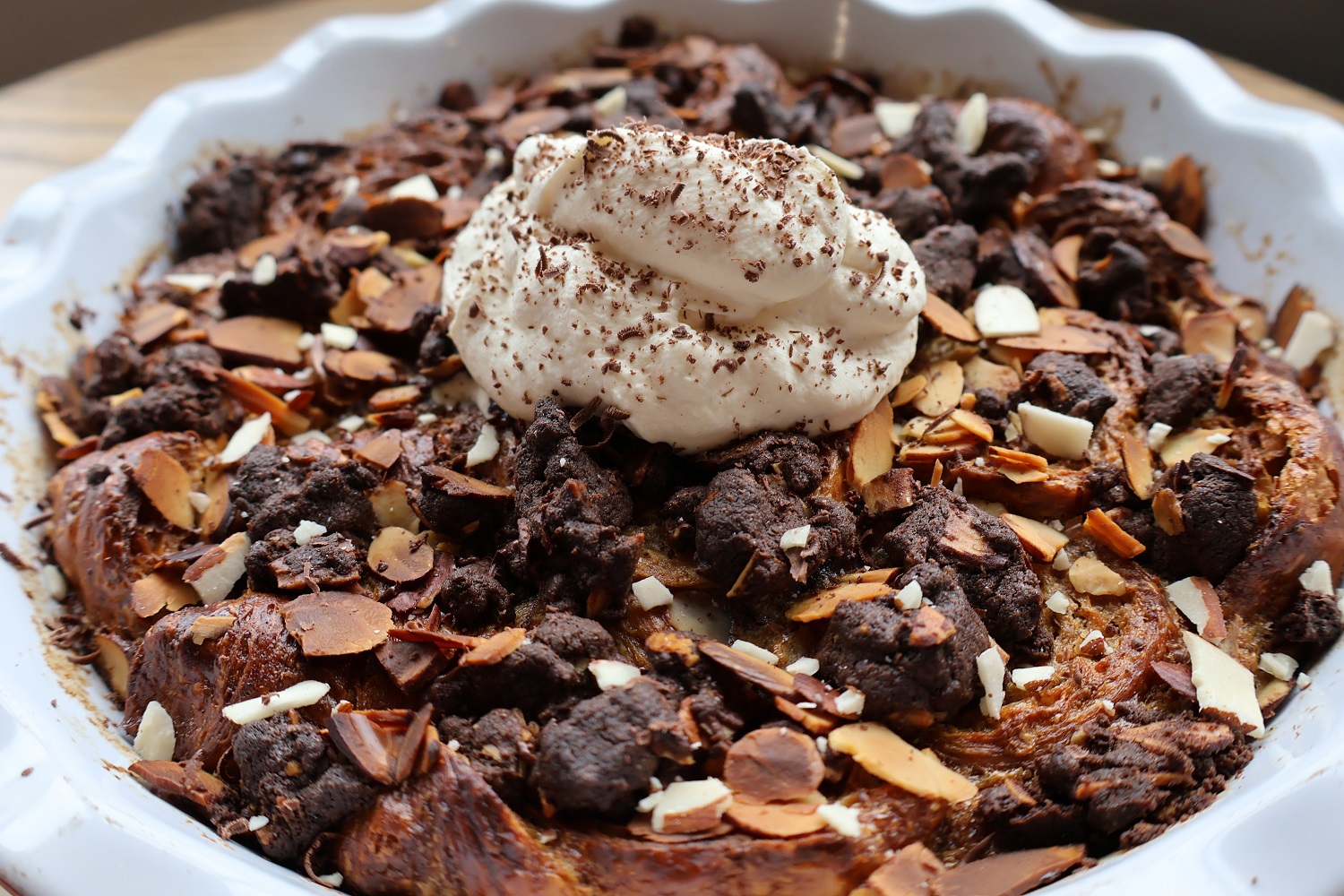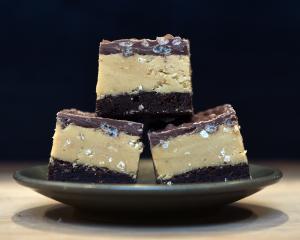Ah, brunch - the magical meal that marries the best of breakfast and lunch into one glorious feast.
Whether it is the allure of a perfectly poached egg, the rich aroma of freshly brewed coffee, or the social delight of sharing a table with friends and family, brunch has secured a special place in our hearts and stomachs. But what makes this meal so captivating?

Brunch’s history is as rich and varied as the dishes it encompasses. The term "brunch" was first coined in England in the late 19th century, combining breakfast and lunch into a single, leisurely meal enjoyed by the upper class. The late mornings and lazy Sundays of the elite found a perfect companion in brunch, evolving from a niche concept to a widespread culinary phenomenon.
For us Kiwis, brunch began to gain popularity in the 1980s and 1990s as our cafe culture blossomed. The casual, social nature of brunch made it a perfect fit for the evolving lifestyle of the time where the experience of dining out as a social activity was growing in value. Cafes started to offer diverse brunch menus that blended traditional British elements with international flavours, appealing to a broad audience.
As for today, almost every city in New Zealand boasts numerous brunch spots, from urban cafes to coastal eateries, each offering unique takes on classic dishes. This practice of late-morning dining seems to be reflective of our laid-back lifestyle and emphasis on community. It is not just about the food; it is about the experience of gathering with friends and family, enjoying a leisurely meal, and connecting over shared tastes and stories.
While indulging in a bunch at a lavish cafe with a group of friends has become a staple for many Kiwis, the increasing cost of living has made this art luxury many are passing up. But this doesn’t mean that the art of brunch is dying. Much like hosting a dinner party, brunch is an occasion that is equally as indulgent in the comfort of your own home. Having brunch at home is often overlooked and yet it is the perfect opportunity to create a relaxed atmosphere where you can stay in your pajamas, enjoy leisurely conversations, and truly unwind without the rush of restaurant service.
Alternatively, for those of us who cook to impress, a home brunch service opens the door to a whole new world of dishes. Have you ever tried monkey bread? I hadn’t until I started the research for this article and boy have I been missing out! Think gorgeous little pillows of brioche dough traditionally coated in a cinnamon glaze - the ultimate centrepiece for an at-home brunch experience.
Whether enjoyed in the hustle and bustle of a trendy cafe or savoured in the comfort of home, brunch offers a chance to slow down, savour delicious food, and strengthen bonds with loved ones. As we embrace the joys of hosting brunch at home, we rediscover the simple pleasures of cooking, creativity, and companionship.

Orange and cardamom monkey bread
For the dough:
360ml milk
2 ¼ tsp yeast
50g sugar
2 eggs
70g softened butter
1 tsp salt
625g plain flour
For the coating
1 cup white sugar
Zest of 3 oranges
3 tsp cardamom
150g melted butter
1 cup brown sugar
Juice of 1 orange
For the white chocolate drizzle
50g white chocolate
10ml canola oil
Method
To make the dough:
1. Begin by adding the flour and salt to the bowl of a stand mixer or a large bowl if you are kneading by hand. Set aside.
2. In a microwave-safe bowl add the milk and sugar and heat until lukewarm - about one minute in the microwave. As the milk is heating, crack the two eggs into a medium-sized bowl and gently whisk. Set aside.
3. Once the milk is lukewarm, give it a whisk to ensure the sugar is dissolved. Sprinkle the yeast over the top and whisk again.
4. Once the yeast is combined with the milk, grab the bowl with the eggs and slowly pour the milk in while continuously whisking the eggs. Once fully combined, add the egg mix into the bowl with the flour.
5. If you are using a stand mixer attach the dough hook and run on a low speed to combine the flour and milk to form a dough. This should only take a couple of minutes and you may need to scrape the sides down. If you are kneading by hand, begin stirring with a spatula or wooden spoon until a shaggy dough begins to form. You can then begin using your hands to bring it together into a smooth dough. Transfer it to a lightly floured surface for the remainder of the hand-kneading process.
6. Once your dough has come together add the softened butter. If you are using a stand mixer, turn it on to a low speed to combine the butter with the dough. You will need to scrape down the edges a few times in the first few minutes. When the butter is almost entirely combined, turn the speed up to a medium-high setting and leave to knead for about 7-10 minutes. This is quite a sticky dough so you may find that it sticks to the bottom of the bowl - in this case just stop the mixer and scrape the bottom of the bowl a few times during mixing to ensure an even knead.
The dough is done when it looks smooth and a small blob can be gently pulled into a translucent layer. If you are hand-kneading, add the butter to the dough on your bench and begin kneading it in by hand. After a few minutes it will begin to seem as though the dough is falling apart, this is part of the process and a few more minutes of kneading will bring it back together.
Continue kneading until a smooth dough forms.
7. When finished kneading in a stand mixer or by hand, place the dough into an oiled bowl. Cover with a damp tea towel and leave in a warm spot to rise. This will take about 1 hour.
8. Once your dough has risen prep your coating. In a bowl add the white sugar, orange zest and 1tsp of the cardamom. In a separate microwave-safe bowl, melt the butter. Set aside. Thoroughly brush a bundt tin with butter. Preheat the oven to 170°C.
9. On a clean bench begin tearing off small balls of the dough. They should be about 20g, but no need to be exact - it looks cooler if there’s some size variation! Depending on the size of your bundt tin you will need about 35-45 balls. Once you have portioned out the dough, roll each piece into a smooth ball. Once all of the balls have been rolled individually dip them into the melted butter, roll in the sugar mix then place into the bundt tin. To speed up this process you can add multiple balls into the butter and sugar mix at once. Arrange the balls into two layers in the bundt tin - it’s OK if there are small gaps between the balls as the dough will expand.
10. When you finish placing the balls in the tin, leave it to rest for 20 minutes. While that rests, prepare the rest of the coating by combining the melted butter, orange juice, brown sugar and 2tsp of cardamom. Once the monkey bread has finished resting evenly pour the coating over top and place on to a baking paper-covered tray (this is to catch any liquid that spills over the sides of the tin during cooking). Place the monkey bread into the oven on a middle rack and bake for about 30 minutes.
11. Once cooked, remove the monkey bread from the oven and leave to cool for 5 minutes. To remove from the tin gently run a knife around the edges of the monkey bread to separate any stuck pieces from the tin. Place a plate over the top of the tin and gently flip. The monkey bread should come out in one piece but if a few balls stick at the top of the tin just ease them out and reattach them to the correct spots in the bread - it is pretty sticky so they should stay in place.
12. Leave the monkey bread to cool for about 10 minutes. After this time add the white chocolate and oil to a bowl and melt in the microwave. Drizzle on top.
 Tiramisu French toast bake
Tiramisu French toast bake

For the French toast:
4 croissants (or any bread rolls)
4 eggs
1 cup milk or cream
⅓ cup sugar
40ml espresso
40ml bourbon
1 Tbsp vanilla
1 tsp cinnamon
¼ tsp salt
For the crumble topping:
50g softened butter
3 Tbsp flour
1 œ Tbsp sugar
1 Tbsp cocoa powder
½ tsp salt
⅓ cup sliced almonds
Whipped cream, yoghurt or mascarpone to serve
Method
1. Preheat the oven to 175°C. Grease a medium baking dish.
2. Cut each croissant into 2cm thick rounds and place into two even layers in the baking dish. Set aside.
3. In a large bowl, add the eggs, milk or cream, sugar, espresso, bourbon, vanilla, cinnamon and salt. Whisk together until combined.
4. Gently pour the egg mix over the croissants. If the mix doesn’t quite cover the croissants, gently push down on them to allow them to absorb some moisture.
5. In a separate bowl combine the softened butter, flour, sugar and salt and gently rub together with your fingertips until they form a soft, crumble-like consistency. Add the almonds and combine into the crumble mix. Distribute the crumble around the top of the baking dish.
6. Place the crumble into the oven and bake for 20-25 minutes. You will know it is done if you give the baking dish a jiggle and the centre of the French toast is firm.
7. Top with whipped cream, mascarpone or yoghurt to serve.
 Spanish eggs
Spanish eggs

Drizzle of olive oil
1 small onion, diced
1 Tbsp crushed garlic
1 small capsicum, cut into strips
400g can crushed tomatoes
1 Tbsp tomato paste
½ cup chicken stock
2 tsp cumin
2 tsp paprika
1 tsp cayenne pepper
4-6 eggs
2 Tbsp fresh coriander
Greek yoghurt and toasted pita breads to serve
Method
1. Begin by heating the oil in a medium-sized pan. When the pan is hot, turn to a low heat and add the onion and garlic. Saute until translucent and fragrant - about 2 minutes. Add the capsicum and cook until soft - about 2 minutes.
2. Add the tomato paste and cook for about 1 minute before adding the tinned tomatoes, stock, cumin, paprika, cayenne pepper and salt and pepper. Mix well to combine and then bring to a simmer. Allow the mix to simmer for about 5 minutes until thickened slightly - enough to make indentations.
3. While the mix is simmering, crack each egg individually into a sieve to remove the loose whites. This will ensure that the eggs form clean balls in the mix. One by one, create a dent in the tomato mix and gently pour an egg into it. Repeat this for as many eggs as you are adding.
4. Once all the eggs are in the pan, cover with a lid and leave to simmer for about 3-5 minutes to allow the eggs to cook.
5. Once cooked, top with a blob of Greek yoghurt and a sprinkle of coriander and serve with some toasted pita bread.











